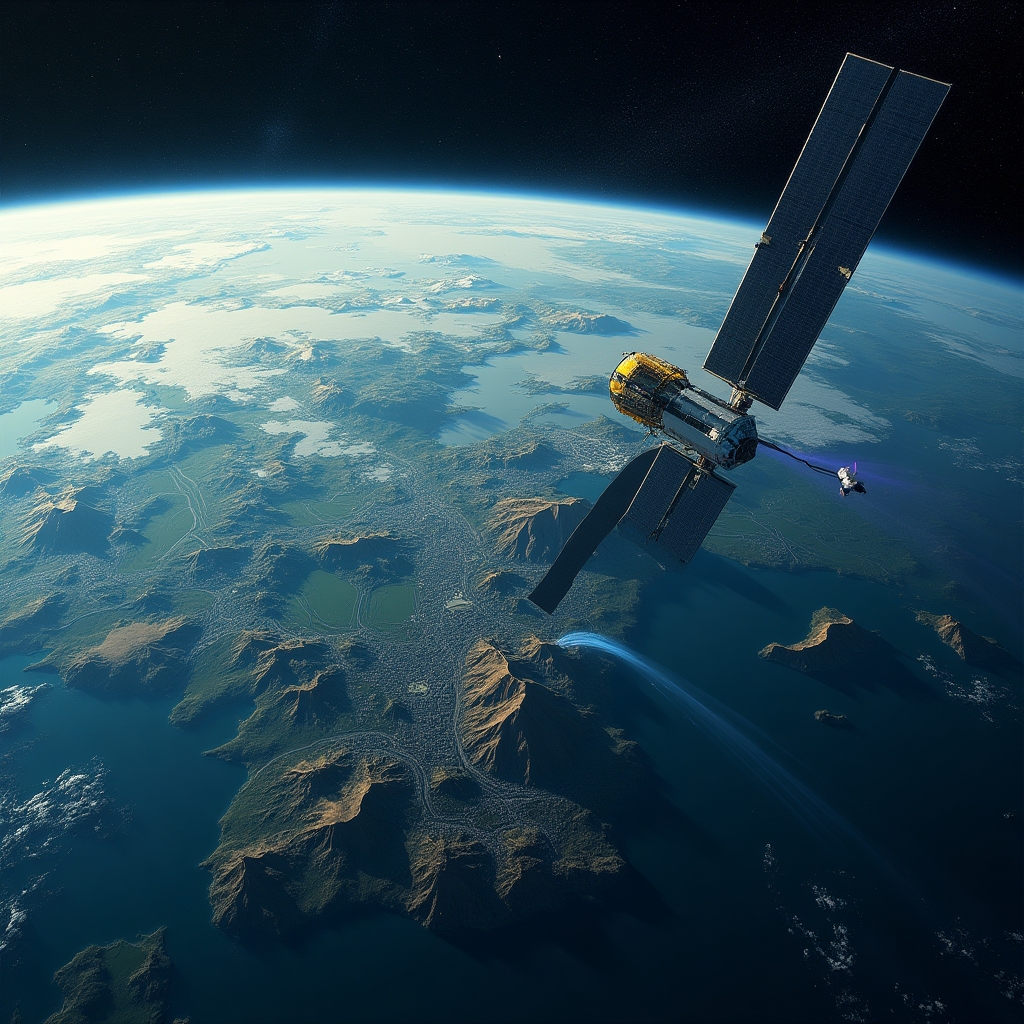A world where cutting-edge technology and planetary care converge is taking shape high above us. With a monumental leap in space technology, the NASA and ISRO have embarked on a mission that could transform how we see our world. Meet NISAR, the most advanced radar satellite ever built to keep a vigilant eye on Earth’s natural phenomena.
iN SUMMARY
- 📡 NISAR will observe environmental changes every 12 days.
- 🌍 It offers crucial data on earthquakes, floods, and glaciers.
- 🤝 This satellite is a joint effort between NASA and ISRO.
- 🚀 A leap forward in global disaster management.
Unveiling NISAR's Mission
Imagine having a set of eyes that never sleep, constantly watching over every corner of our planet. That’s the promise of the NASA-ISRO Synthetic Aperture Radar (NISAR), designed to monitor dynamic Earth processes. From tracking the subtle shifts in tectonic plates to witnessing the retreat of glaciers, NISAR's precision radar can scan the land and ice surfaces every 12 days.
NISAR is intended to revolutionize the way scientists study our planet. By delivering unprecedented imagery and data, it provides real-time insights into natural hazards like earthquakes, landslides, and ice-melt, affording communities invaluable warning systems.
The Power of Radar Technology
Why is NISAR so special? Let me explain. Unlike visual or infrared systems that can be hindered by clouds or darkness, NISAR's radar technology cuts through all weather conditions, providing uninterrupted monitoring. This is crucial for observing otherwise invisible natural events, like the early signs of a landslide.
Radar operates by sending out signals and analyzing the echoes that bounce back, allowing NISAR to "see" changes in ground elevation, water content in soil, or ice density. According to a 2025 report from Science Daily, this capability is pivotal in informing flood management strategies and urban planning.
Global Collaboration
Building a satellite of such caliber requires collaboration at its finest. NASA teamed up with the Indian Space Research Organisation to leverage both agencies' unique strengths. ISRO provided a key component: the spacecraft bus, which houses and powers the instrument. This partnership exemplifies how global collaboration can achieve what might be impossible alone.
Impact on Environmental Protection
The implications of NISAR extend far beyond disaster preparedness. As climate change accelerates, understanding patterns of ice loss and deforestation becomes vital. NISAR's data will support scientists worldwide, enabling them to model climate systems more accurately. The data could directly inform policy-makers and conservationists, enhancing efforts to protect vulnerable ecosystems.
Practical Implications and Future Potential
For many communities, especially those in regions like Winnipeg, prone to severe flooding, the radar's data may offer early warning signs to prevent catastrophe. For cities like Los Angeles, sitting near seismic faults, NISAR can help in understanding and preparing for potential earthquake threats.
Finding Hope in Technology
What would you do if you could predict a disaster before it struck? With technologies like NISAR, this no longer sounds like science fiction. Instead, it’s a future we’re now stepping into—a future where technology helps us live more harmoniously with our planet.
Everyone is welcome to become a part of the iNthacity community, a "Shining City on the Web" where we explore the intersections of innovation and environmental stewardship. Share your thoughts, spread the word, and participate in conversations that shape our shared future.
As we edge closer to a new era of environmental understanding, are you ready to join the conversation on how we can nurture this planet we call home? Let's make this world a safer, smarter place—together.
And who knows, maybe one day we’ll look back and laugh at the times our planet had a mind of its own, all thanks to a satellite that could see through clouds.
Disclaimer: This article may contain affiliate links. If you click on these links and make a purchase, we may receive a commission at no additional cost to you. Our recommendations and reviews are always independent and objective, aiming to provide you with the best information and resources.
Get Exclusive Stories, Photos, Art & Offers - Subscribe Today!
























Post Comment
You must be logged in to post a comment.